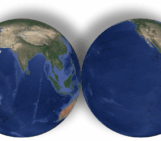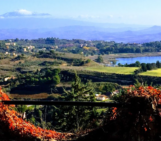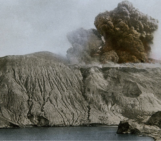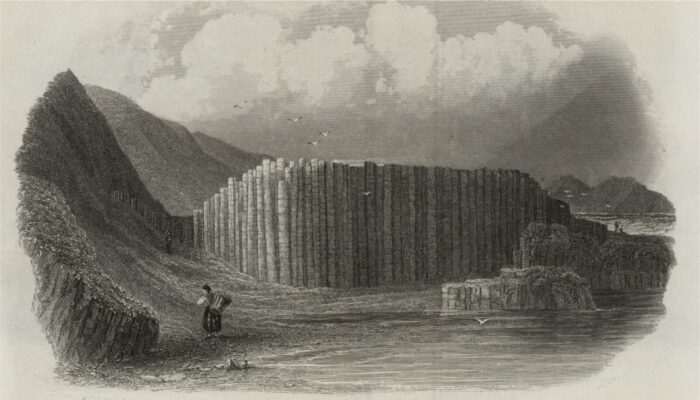
Ireland is famous for retaining a rich heritage of folk tales, which are thousands of years old. They tell stories about great heroes, wars and loves, fantastic creatures such as leprechauns, fairies, banshees, giants and so on.
Among them, there is a Middle Earth time myth, concerning a “small” giant, named Finn McCool, who built a great stone way connecting Northern Ireland with the western Scottish coast, the so-called Giant’s Causeway. Finn McCool, was a mythical warrior of Gaelic traditions, always depicted as a tall, athletic, strong, handsome, and fearless men. In the case of the Giant’s Causeway myth, he was even described as the biggest and strongest giant in all of Ireland, whose voice could be heard for miles around.
The Giant’s Causeway myth
The following tale is based on the well-known warrior story of the myth; whoever would like to know the romantic alternative, a barely unknown version of the myth tells a love story instead (National Trust).
There was a time when the strongest giants of Scotland and Ireland, Benandonner and Finn respectively, were fierce rivals shouting and threatening each other from across the Sea of Moyle. One day, Finn decided to finally challenge Benandonner, however he needed a way to cross the sea so he decided to build a rocky path (Fig. 1a), using chunks of the Antrim coast.

Fig. 1. a) The Giant’s Causeway along the northern coast of Moyle district (Pam Fray, via WikiMedia); b) the Giant’s foot (Linda Bailey, via WikiMedia).
After two tedious days, Finn completed the path, and reached the Scottish coast only to now properly understand how big Benandonner was. He immediately ran away frightened, repentant of his threats and challenges. Unfortunately, Benandonner spotted Finn running away and decided to chase him, who, in his rush, lost one of his boots, which is still visible today (actually it is only a rock with the shape of a boot, Fig. 1b).
Once he got home, Finn and his wife, Oonagh, were frightened by the tremors and noise caused by the approaching Benandonner, who was so intense they had to plug their ears. In that moment of crisis, Oonagh saved the day and won the fight just by wrapping Finn with a tablecloth, dressing him as a baby and settling him in a baby cot. Once Benandonner entered Finn’s house, Oonagh told him that the husband was out hunting, and invited him to try her husband’s favourite meal while waiting. Instead, Oonagh baked a cake of griddle-bread with iron griddle inside, on which the Scottish giant broke three of his teeth. She took advantage of the moment to show Benandonner her new baby, which was actually Finn in disguise. Looking at such a giant baby, and frightened by such a strong and painful meal, Benandonner made his excuses and fled away destroying the Causeway behind him.
Although the myth is incredibly interesting and fascinating, for a geologist the true history is even more exciting.
The Giant’s Causeway rocks
The Causeway looks man-made, perhaps by ancient Romans, although it is just a bit older than the Roman Empire (27 B.C. – 476 A.D.), and it is not made by simple rounded or hexagonal stones placed together. The causeway is actually made of about 40.000 columnar basalts, 58 – 62 million years old, which have polygonal shape (5 to 6 sides) ranging from 38 to 51 cm ca. in diameter and up to 25 m high, arranged on 100 m high cliffs (Encyclopaedia Britannica).
The columnar basalts outcropping on the Giant’s Causeway are related to the breakup of Laurasia, along with the opening of the North Atlantic Ocean (Fig. 2). At those times (between 62 and 58 Ma) the Antrim coast of Northern Ireland was a kind of huge magma pond, full of explosive volcanoes, extending from southern Greenland to northern Europe (Geoffroy et al., 1996).

Fig. 2. Evolution of the North Atlantic Ocean since 65 My, period of the initial magmatism in Northern Ireland (after Scotese, 2012).
The Irish continental crust was dissected by a series of normal faults, producing structural lows (valleys), in-filled with huge volumes of magma extruded from the so-called “Iceland Plume”, which is still active today below Iceland. The plume, located below central-eastern Greenland, affected a huge area about 2500 km in diameter (Fig. 3; White, 1989; Barrett-Moore et al., 2017) with a series of magmatic pulses separated by periods of stasis (Dickin, 1988).

Fig. 3. Predicted dynamic topography during the evolution of the “Icelandic Plume” as modelled by Barrett-Moore et al., 2017.
The magmatism, at least in Northern Ireland, had two main phases ended up into the Lower Basalt and the Upper Basalt formations, separated by the Interbasaltic Formation (e.g. Tomkeieff, 1940; Lyle, 1980), altogether known as the Antrim Lava Group. The lava flows of the Lower Basalt Formation extruded from vents and NNW-aligned fissures, covering the previous volcanic ash of the initial explosive volcanism, accreting up to 531m (Manning et al., 1960). The following Interbasaltic Formation represents a period of lower volcanic activity, during which the uppermost Lower Basalt Formation was lateritised. In some locations, the weathering did not seep deeply into the rock, leaving small rounded masses of basalt surrounded by the red lateritic rocks, locally known as the “Giant’s Eyes” (Fig. 4a).
The presence of lignite layers at the top of the laterites, suggest the presence of a subtropical forest, developed at the end, and probably during, the period (Harkness and Blyth, 1856 in Tomkeieff, 1940). The forest was characterized by streams, rivers, swamps and lakes, which excavated channels and valleys. When the volcanic activity resumed suddenly, flows of lava covered the former subtropical forest and its incisions, creating large lava frivers and lakes, in which the columnar basalts of the Giant’s Causeway formed. Spectacular sites where to see them are the so-called “Organ” and “Amphitheatre” (Fig. 4b, c). After that, a new long period of quiescence was then disturbed by the last huge series of eruptions of the Upper Basalt Formation, until around 58 My (GSNI). Nowadays, we can enjoy the view of the Causeway, thanks to the great erosion produced by the movement of subsequent ancient glaciers and the sea waves.
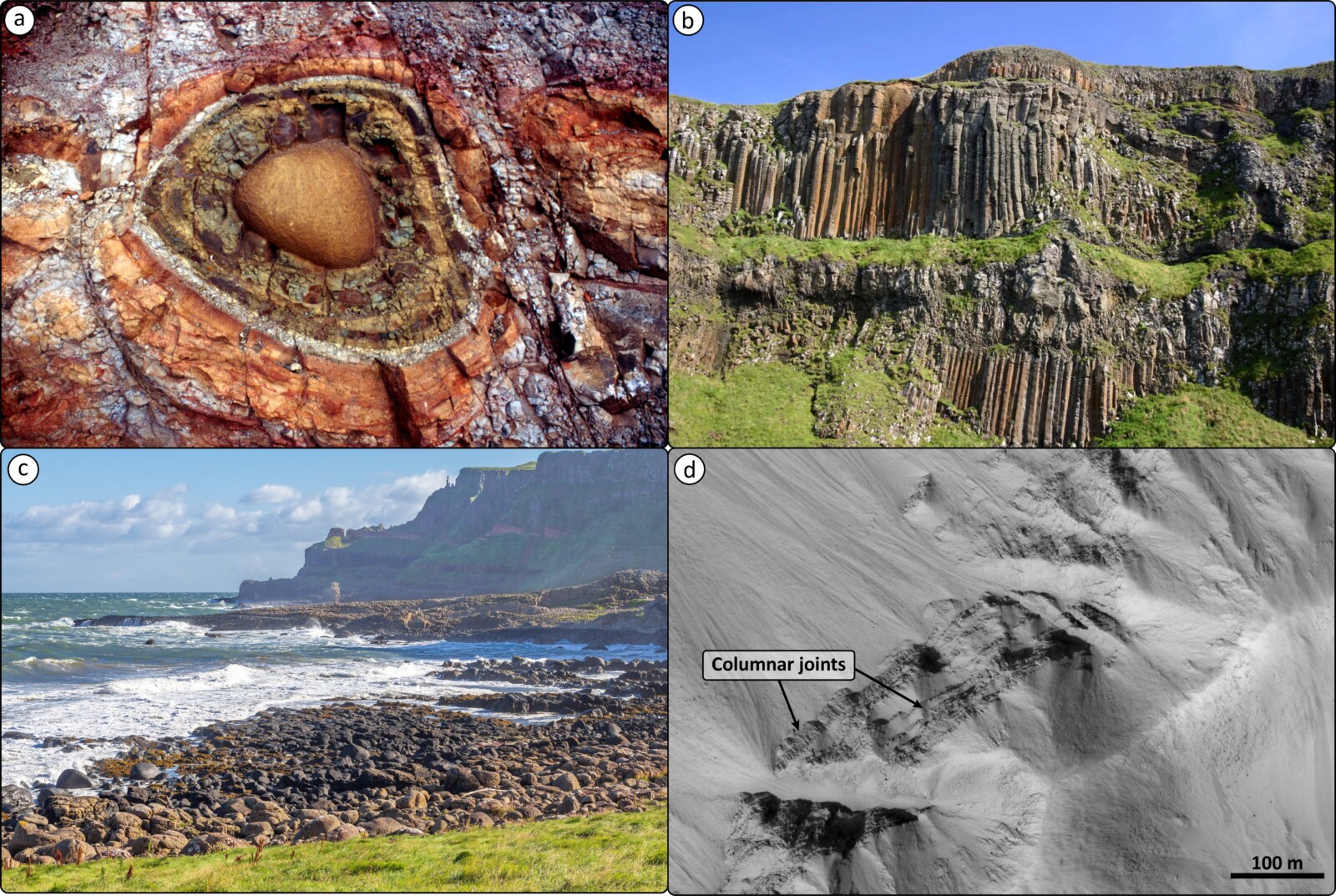
Fig. 4. a) The Giant’s Eye (Gerd Eichmann, via WikiMedia); b) he Organ (Encyclopædia Britannica;) c) panoramic side view of the Amphitheatre (Joachim Kohler, via WikiMedia); d) columnar joint on mars (HiRISE data).
The columnar joints are not so uncommon; indeed it is possible to find them in many spots around the world, such as Italy, Scotland, Iceland, Vietnam, Germany, Hong Kong, Mexico, Romania, Norway, Armenia, United States and many others, even on Mars (Fig. 4d, Milazzo et al., 2009). If you wish to know more about their geological formation and characteristics, keep an eye on the next “Features from the field” post!
References
Barrett-Moore, N., Hassan, R., Flament, N., Müller, D., 2017. The deep Earth origin of the Iceland plume and its effects on regional surface uplift and subsidence. Solid Earth 8, 235 – 254. https://doi.org/10.5194/se-8-235-2017.
Dickin, A.P., 1988. The North Atlantic Tertiary Province. In Macdougall, J.D. (Ed.). Continental Flood Basalts. ontinental Flood Basalts. Petrology and Structural Geology, vol 3. Springer, Dordrecht, 111 – 149. https://doi.org/10.1007/978-94-015-7805-9_4
Encyclopaedia Britannica. Consulted on 11.12.2022.
Geoffroy, L., Bergerat, F., Angelier., J., 1996. Brittle tectonism in relation to the Palaeogene evolution of the Thulean-NE Atlantic domain: a study in Ulster. Geological Journal 31, 259 – 269. https://doi.org/10.1002/(SICI)1099-1034(199609)31:3<259::AID-GJ711>3.0.CO;2-8
Geological Survey of Northern Ireland (GSNI). Geology of Northern Ireland: our natural foundation.https://earthwise.bgs.ac.uk/index.php/GeologyofNorthernIreland:ournaturalfoundation. Consulted on 13.12.2022.
Lyle, P., 1980. A petrological and geochemical study of the Tertiary basaltic rocks of northeast Ireland. Journal of Earth Sciences, Royal Dublin Society 2, 137 – 152. https://www.jstor.org/stable/30002269
Manning, P.I., Robbie, J.A., Wilson, H.E., 1960. Geology of Belfast and the Lagan Valley. Memoir of the Geological Survey of Northern Ireland. HMSO, Belfast.
Milazzo, M.P., Keszthelyi, L.P., Jaeger, W.L., Rosiek, M., Mattson, S., Verba, C., Beyer, R.A., Geissler, P.E., McEwen, A.S.; The HiRISE Team. Discovery of columnar jointing on Mars. Geology 37(2), 171 – 174. https://doi.org/10.1130/G25187A.1
Nationaltrust. Consulted on 11.12.2022.
UNESCO World Heritage.https://whc.unesco.org/en/list/369/gallery/. Consulted on 11.12.2022.
Scotese, C.R., 2012. Plate Tectonic and Paleogeographic maps, PALEOMAP Project. Consulted on 11.12.2022.
Tomkeieff S.I., 1940. The basalt lavas of the Giant’s Causeway district of Northern Ireland. Bulletin of Volcanology 6, 89 – 143. https://doi.org/10.1007/BF02994875
White, R.S., 1989. Initiation of the Iceland Plume and opening of the North Atlantic Margins. In Tankard, A.J. and Balkwill, H.R. (Eds.). Extensional Tectonics and Stratigraphy of the North Atlantic Margins. American Association of Petroleum Geologists Memoir 46, 149 – 54. https://doi.org/10.1306/M46497C10

